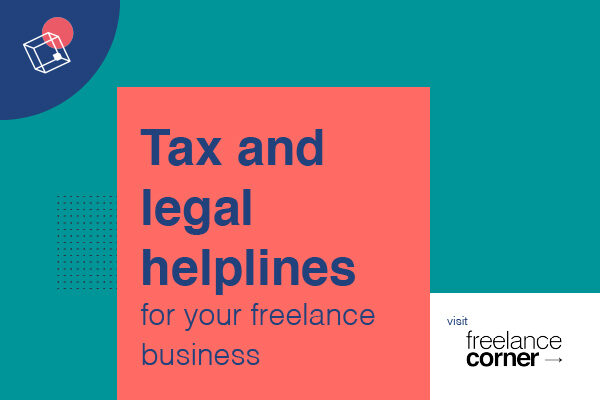For many freelancers, getting on to the property ladder can be tricky. That’s why Freelance Corner’s partner IPSE (the Association of Independent Professionals and the Self-Employed) has teamed up with CMME, a mortgage brokerage specialising in helping freelancers get mortgages.
In the latest episode of Freelance Corner, which you can listen to below, CMME head of mortgages Simon Wheeler answered some common questions, and provide tips for getting a mortgage as a freelancer.
The first hurdle for those looking to buy a house is getting your deposit and documents together. This can take some time so it’s worth planning ahead and figuring out what your budget looks like before you start your mortgage journey.
Your options when saving for a mortgage
Savings
This year you’re unlikely to get a huge return in interest from your savings accounts unless you fixed them some time ago. With the Bank of England base rate slashed, you cannot rely on large interest rates to bolster your deposit savings.
That being said, even with low interest rates on your savings, tucking money away whenever you can is a great way to build up your deposit.
If you took advantage of the Help To Buy ISA account whilst it was available you can still benefit from the bonus 25 per cent as offered by the government until 2029 on your first home purchase. Unfortunately, new Help To Buy ISA accounts are no longer available.
However, Boris Johnson has suggested a new initiative to support first time buyers in what he calls ‘Generation Buy’. Full details on what this new idea entails are yet to be released.
Gifted or inherited deposits
In either of these instances, most mortgage lenders will require a full and thorough trail of supporting documentation to the source of the deposit.
In the case of a gift, a lender will normally seek current bank or savings account statements which show the build-up of funds over a three-month period.
They will also require a supporting letter from the provider of the gift, which will need to confirm there is no expectation that the monies are to be repaid or that they expect to receive proceeds from any future property sale.
In the case of an inheritance sum to be used for a deposit, most lenders would be satisfied with legal documents that confirm the funds are due to be bequeathed to the borrower.
Family saving/mortgage account
If you or your relatives are uncomfortable with gifting a deposit, or indeed unable to gift a deposit, you might want to consider one of the various mortgage/savings accounts currently offered by lenders.
The idea of the account is that your relative can put their money into a savings account attached to your mortgage. It acts as security on your 100 per cent loan-to-value mortgage for you, and as a fixed rate savings account for them.
For example, you can borrow the full purchase price of your home at £200,000 because your family member or friend has provided 10 per cent (£20,000) as security for a fixed term, usually 5-10 years.
There are a number of examples of these accounts available:
More details about each account can be found on their websites.
Three top tips to getting better at saving:
1. Save your change
It may seem simple, but tucking away your change means that your savings grow pretty quickly without you really having to consciously save.
There are a couple of ways to do this and remember to do it regularly:
You could have a change bowl by the door, empty your pockets every time you come into the house, and save up the pennies.
Try a swear jar or something similar, adding £1 every time you do the thing you are not meant to do.
Use a change-saving account. Lots of banks now offer change saving accounts where the amount you spend when you shop is rounded up to the pound and this extra bit is automatically moved into your savings account.
Some of these include:
2. Budget wisely
Think about your budget, know your expected income and outgoings each month and try and stick to it. Outline a specific amount for things like groceries and luxuries and make sure you are not overspending on things like utilities and Wi-Fi.
Keep your budget updated and follow it as closely as you can.
Try a budgeting notebook/spreadsheet or an app like Money Dashboard or Moneyhub.
3. Save when you get paid
When you get paid by a client, pay your bills and save as much as you can of whatever is left. This is a large-scale way to save your pennies, but if you’re serious about your mortgage plans, then this might be a savings solution for you.
This can be particularly difficult for freelancers when earnings can fluctuate considerably between months. It may be worth saving a set percentage every month of your earnings after bills and tax savings.
How much will I need for my mortgage deposit?
The level of deposit varies considerably, but it’s key to remember that providing a higher deposit will always give access to a lower interest rate.
It’s also important to remember that as a result of COVID-19, many lenders have changed their criteria and reduced or removed the availability of 95 per cent loan-to-value mortgages.
If you’re looking for the lowest interest rates, or for a lender to bend their lending criteria, a deposit of 25-30 percent will usually provide access to the most favourable terms.
Stamp Duty savings
The Stamp Duty holiday, which lasts until the end of the 2020-2021 tax year, means that there is a Stamp Duty exemption on properties up to £500,000, and considerable savings above this threshold.
At present the average house buyer stands to save roughly £2,500 on their house purchase. This saving increases exponentially when you’re looking at property purchase somewhere like London where the average house price is around £650,000, taking the Stamp Duty savings up to a considerable £15,000*.
In terms of saving and your deposit, this money can then be diverted to increase a deposit or put aside for house renovations. It’s an amount certainly worth consideration if you have house-buying plans in the coming months.
More on Stamp Duty can be found on the government website.
* Before the changes: 0% up to £125,000, 2% on £125,000 = £2,500, then 5% on £403,965 (£653,965 – £250,000) = £20,198.25. Total Stamp Duty expense = £22,698.25
After the changes: 0% on the first £500,000 + 5% of £153,965 = £7698.25
Total saving: £22,698.25 – £7698.25 = £15,000.25
Documents: What do freelancers need to provide?
A lender will request proof of identification and proof of address for all applicants. Income evidence will be requested which will vary depending on how the lender is assessing your affordability.
You will typically be asked to provide three months of bank statements to evidence your income and expenditure, and as a self-employed worker, you may also be requested to provide business bank statements.
Additional documents may be requested if the application involves other elements, such as capital raising against the property for home improvements. In this instance, a lender will normally require quotes to demonstrate the level of any additional funding matches the cost of the planned work on the property.

Proof of your income
The main point freelancers should account for when considering documentation ahead of their mortgage plans in the coming months is the additional scrutiny on self-employed professionals by lenders this year.
For sole traders, mortgage lenders will typically seek evidence of your income after tax. In very limited circumstances lenders will seek only one years-worth of accounts, however, for the most part lenders will take the average of two to three years of accounts.
As a limited company director, mortgage lenders will typically look at salary and dividends. They would accept the director’s salary only and, where applicable, a partner’s or employee’s if they are named on the mortgage application.
You can sometimes find lenders, though few and far between, who will look at salary and net profits, though this is not typical and often requires an expert mortgage broker to negotiate this with the lender.
The most significant document lenders will require is your tax overview statement, a document that HMRC replaced the SA302 forms with several years ago. This acts similarly to the PAYE P60 form and details the total income for the year and how much tax was paid.
Other steps to get mortgage ready
1. Credit check
Check your credit profile/report to ensure you have a healthy score. Do not undertake credit searches before you look at mortgages. It’s worth querying any old debts that shouldn’t be on your credit report to have them removed as this will boost your score.
Remember that your credit score is not the only determining factor for your mortgage eligibility and that you may still be able to get a mortgage even if you have poor credit.
2. Clear unnecessary debt
Close credit and store cards that you do not use to boost your credit score as mortgage lenders treat unused but open credit as potential debt.
Pay off as much debt as possible from a credit scoring perspective but also with a view to financial stability: clearing debts wherever possible will increase your happiness as you move towards your largest financial commitment, your mortgage.
3. Speak to a specialist
Freelancers can often have complex incomes, especially this year. Whether nothing has changed or you’ve moved to PAYE or an umbrella company, speaking to an expert that understands your income can streamline your mortgage journey.
Experts that understand the way you work and the way your income works can remove a lot of the hassle of getting a mortgage and increase your ability to get the best possible rates.
Your income can be complex but that doesn’t mean getting a mortgage should be.
Useful resources for getting a mortgage when self-employed
- Ask the Expert: Deposits and Documentation
- CMME’s Free Guide to Contractor Mortgages
- CMME’s Free Guide to Remortgage







